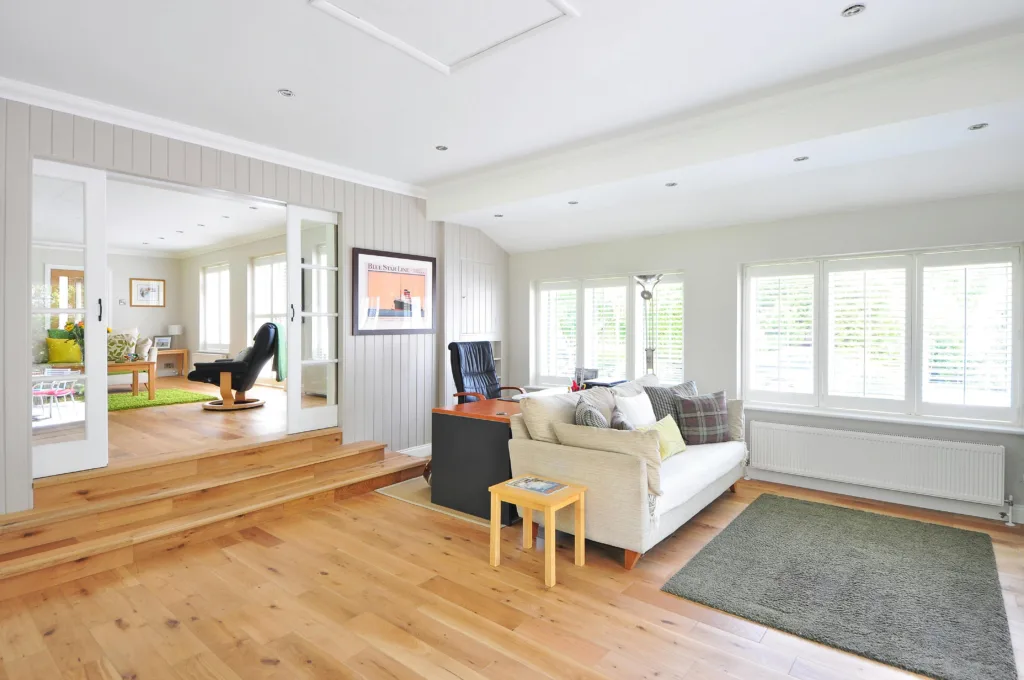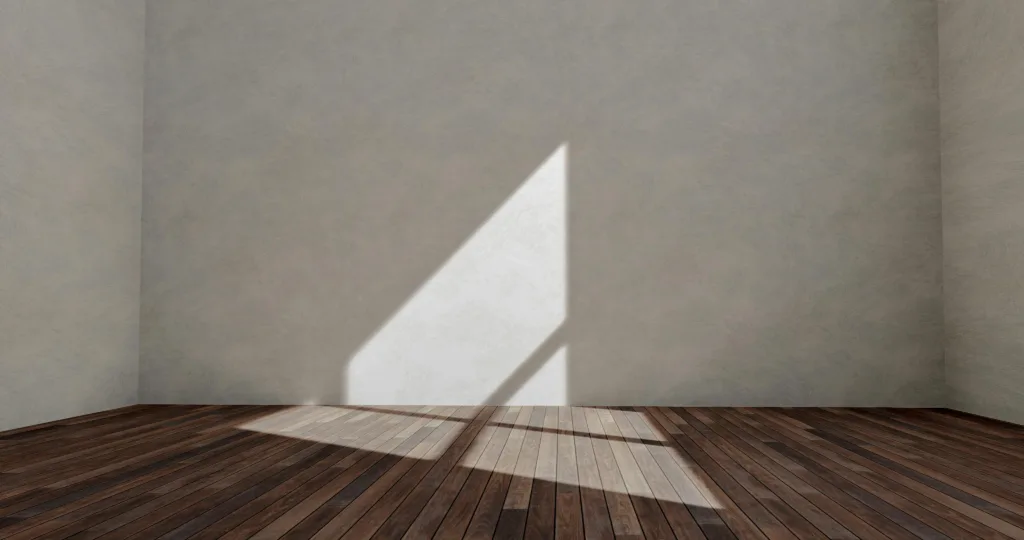Identifying the type of hardwood floor and its finish is crucial for applying the correct cleaning methods, whether you’re aiming to recoat hardwood floors or fix scratches using a homemade cleaner.
The care regimen can vary significantly, from the safe use of vinegar on hardwood floors to understanding how to polish hardwood floors for a spotless finish.
This article will guide you through the essentials of how to clean hardwood floors, from selecting the appropriate supplies like a microfiber mop and floor wax to a step-by-step cleaning process that tackles tough stains, scratches, and the choice of castile soap or steel wool for maintenance, ensuring your wood floors remain pristine.
Essential Supplies for Cleaning Prefinished Hardwood Floors
Microfiber Mops and Dusting Tools
- Microfiber Mop: Ideal for dusting and cleaning, capturing fine particles without scratching the surface.
- Disposable Electrostatic Cloths: Excellent for quick dusting sessions, attracting dust and hair effectively.
- Wood Floor Mop: Specifically designed for deeper cleaning of hardwood floors.
Vacuuming and Deep Cleaning Devices
- Vacuum Cleaner: Use a model without a beater bar to avoid damaging the floor. Ensure it is set to the bare floor setting for optimal cleaning.
- No. 000 Steel Wool and Floor Wax: For soft oiled finishes, these can gently remove tougher stains without harsh chemicals.
Cleaning Solutions and Protectors
- Wood Floor Cleaning Product: Choose products specifically for prefinished hardwood floors, ensuring they are diluted properly.
- Bona Hardwood Floor Cleaner: Recommended for its non-wax formula and effectiveness in polishing without leaving residues.
Additional Protective Measures
- Floor Protectors: Install under furniture legs to shield the wood from scratches and dents.
- Area Rugs and Floor Mats: Strategically place in high-traffic areas to minimize wear and tear. Ensure mats are placed both outside and inside exterior doors to catch incoming dirt and moisture.
Specialty Products and Tools
- Better Life Floor Cleaner and Murphy Oil Soap: Noted for their plant-derived ingredients and ease of use without the need for rinsing.
- Zep Commercial Hardwood & Laminate Cleaner: Best for heavy-duty cleaning, capable of handling set-in stains.
By utilizing these specific tools and cleaning agents, maintaining the beauty and longevity of prefinished hardwood floors becomes a manageable task. Each product and tool is selected to ensure effective cleaning while preserving the integrity of the wood’s finish.
Step-by-Step Cleaning Process
Regular Cleaning Routine
- Sweep Daily: Use a broom or a hardwood floor mop to sweep the floors every day. This prevents the accumulation of dirt and abrasive materials that can degrade the surface of the wood.
- Vacuum Weekly: Set your vacuum cleaner to the ‘hard floor’ mode, ensuring the brush roll is off to avoid scratches. Vacuuming helps remove finer dust particles that sweeping might miss.
- Spot Cleaning: Utilize spray-and-mop products or disposable wet pads specifically designed for hardwood floors. These are excellent for quick touch-ups and handling spills immediately.
Deep Cleaning and Maintenance
- Monthly Deep Cleaning:
- Use a flat mop and a cleaner recommended for hardwood floors.
- Follow the manufacturer’s instructions for dilution and application to ensure effective cleaning without damaging the floor.
- Wring the mop well to avoid leaving excess water on the floor, which can cause damage.
- Bi-Annual Recoating:
- Deep clean the floor as described, then buff to prepare the surface.
- Apply a new coat of finish to protect and refresh the floor’s appearance.
Protective Measures and Regular Maintenance
- Entrance Mats: Place a doormat at each entrance to reduce the amount of dirt and moisture tracked onto the hardwood floors.
- Rugs in High-Traffic Areas: Deploy rugs in areas that receive a lot of foot traffic to minimize wear and tear on the hardwood.
- Furniture Pads: Attach felt pads to the legs of chairs, sofas, and tables to prevent scratches. Use furniture sliders when moving heavy items across the floor.
- Regular Schedule:
- Sweep daily to remove dirt and debris.
- Vacuum weekly with the appropriate settings.
- Clean high-traffic areas every two weeks.
- Conduct a thorough cleaning with a suitable hardwood floor cleaner monthly.
By adhering to these steps, you can maintain the pristine condition of your hardwood floors, ensuring they remain spotless and durable for years to come.

Tackling Tough Stains and Scratches
Light Surface Scratches
- Identify the Finish: Before attempting any repairs, determine the type of finish on your hardwood floors as this will guide the appropriate treatment.
- Minor Scratch Treatment:
- Clean the affected area thoroughly.
- Mix apple cider vinegar with olive oil and apply to the scratch; let sit for a few minutes, then buff with a soft cloth.
- Alternatively, use a blending pencil or a stain marker from a wood furniture touch-up kit to color small scratches.
- Preventive Measures:
- Place furniture pads under chair and table legs.
- Opt for the right kind of rug pads to prevent sliding and damage.
Deep Gouges and Severe Scratches
- Deeper Scratch Treatment:
- For scratches deeper than 1/16-inch, lightly sand the area with fine-grit sandpaper.
- Apply wood filler matched to the floor color. Once dry, sand smoothly and finish with a matching stain.
- For very deep gouges, consider replacing the damaged plank or consult a professional for patching.
- Maintenance Tips:
- Regularly trim pet claws and remove shoes to prevent new scratches.
- Place rugs in high-traffic areas and use protective pads on all furniture.
Special Considerations
- Engineered and Prefinished Floors:
- Repairs on engineered wood might require specific products like wax sticks or crayons to fill in scratches.
- Match repair materials closely to the existing floor to ensure a seamless fix.
- Professional Help:
- For significant damage or to apply durable finishes like polyurethane, hiring a professional is advisable.
- Services like SVB Wood Floors offer specialized care including dustless refinishing and damage restoration.
Conclusion
Throughout this article, we’ve explored the nuanced approaches required to maintain and clean hardwood floors, ensuring their longevity and beauty.
By selecting the appropriate cleaning supplies and following a detailed cleaning regimen, homeowners can effectively remove tough stains, scratches, and keep their floors looking spotless.
The emphasis on using specific tools, such as microfiber mops, and tailored cleaning solutions, like Bona Hardwood Floor Cleaner or Murphy Oil Soap, highlights the importance of understanding the unique needs of prefinished hardwood floors to preserve their finish.
The journey from identifying the type of hardwood floor and its finish to adopting protective measures against wear and tear underscores the comprehensive care hardwood floors necessitate.
Whether it’s implementing regular cleaning routines, addressing minor scratches with homemade solutions, or seeking professional help for more severe damage, the outlined steps serve as a guide to safeguarding the longevity and aesthetics of hardwood floors.
FAQs
How can I clean my hardwood floor without leaving any streaks?
To clean hardwood floors without streaking, use a microfiber mop or cloth, which can be effective for both dry dusting and wet cleaning, ensuring a streak-free finish.
What cleaning products do professionals recommend for hardwood floors?
Professionals often use commercial wood-cleaning products like Bona or Murphy Oil Soap to clean hardwood floors. Always follow the manufacturer’s instructions. Alternatively, you can create a homemade cleaner by mixing one part vinegar with 10 parts warm water and adding a few drops of liquid Castile soap.
What causes streaks on my floors after mopping, and how can I prevent this?
Streaks on floors after mopping are typically caused by using a dirty or contaminated mop. If the streaks are severe, the floor may need to be stripped and refinished. To prevent streaking, ensure that your mop heads are clean before you start mopping.
What is the best method to clean hardwood floors without ruining the finish?
To clean hardwood floors without damaging the finish, quickly blot spills with a soft, absorbent cloth. Use a pH-neutral, non-abrasive cleaner specifically designed for wood floors. Avoid using water and vinegar, soap-based cleaners, or steam cleaners, as these can harm both the wood and its finish.
